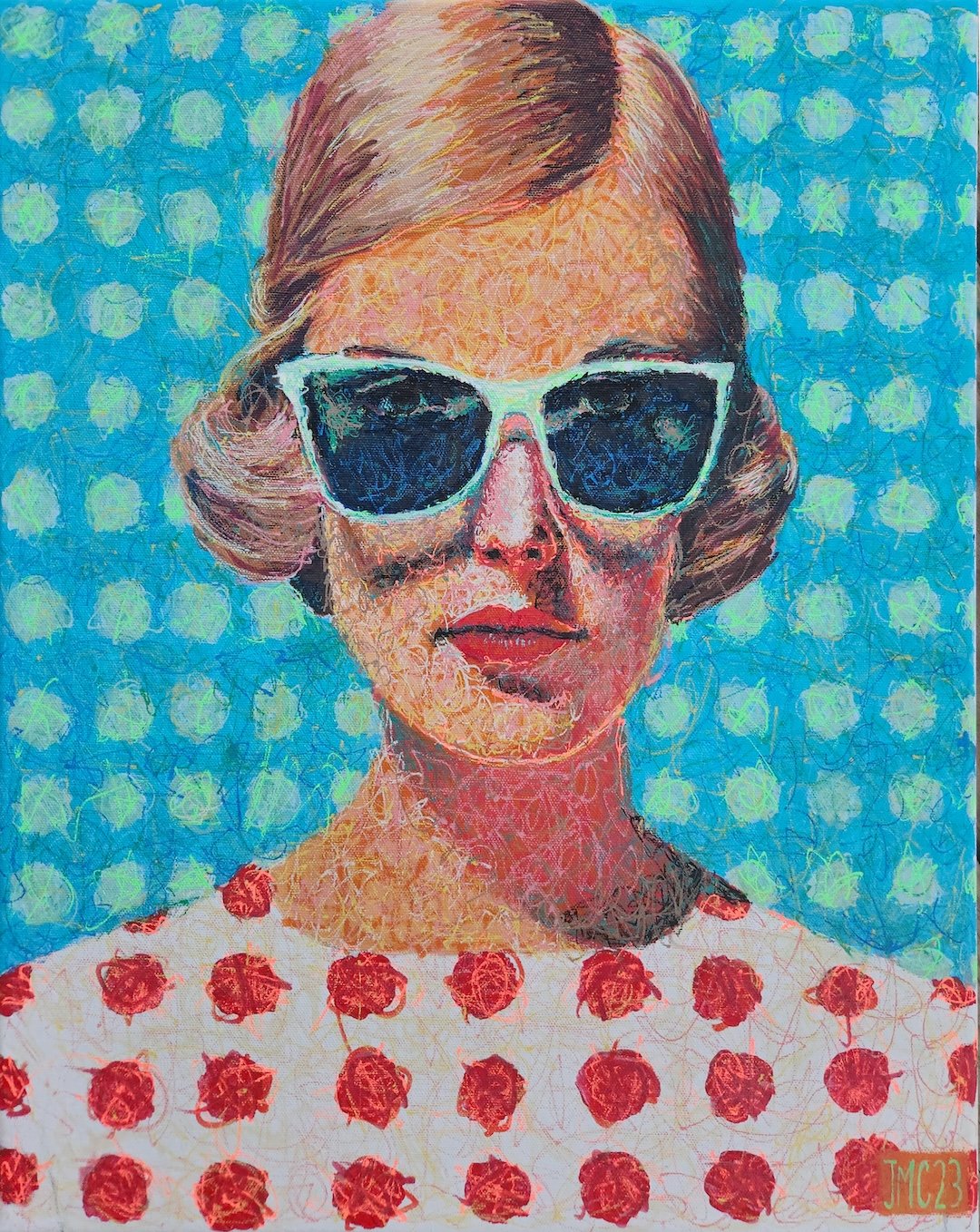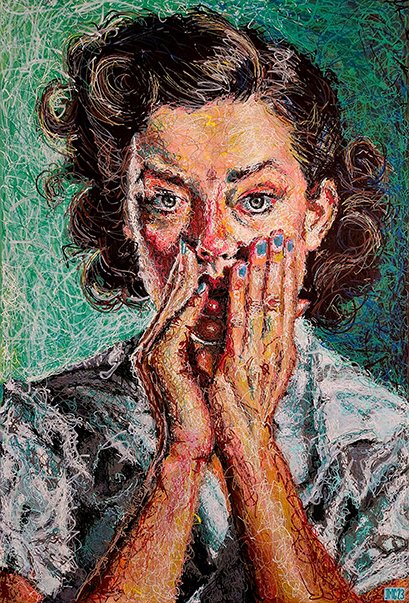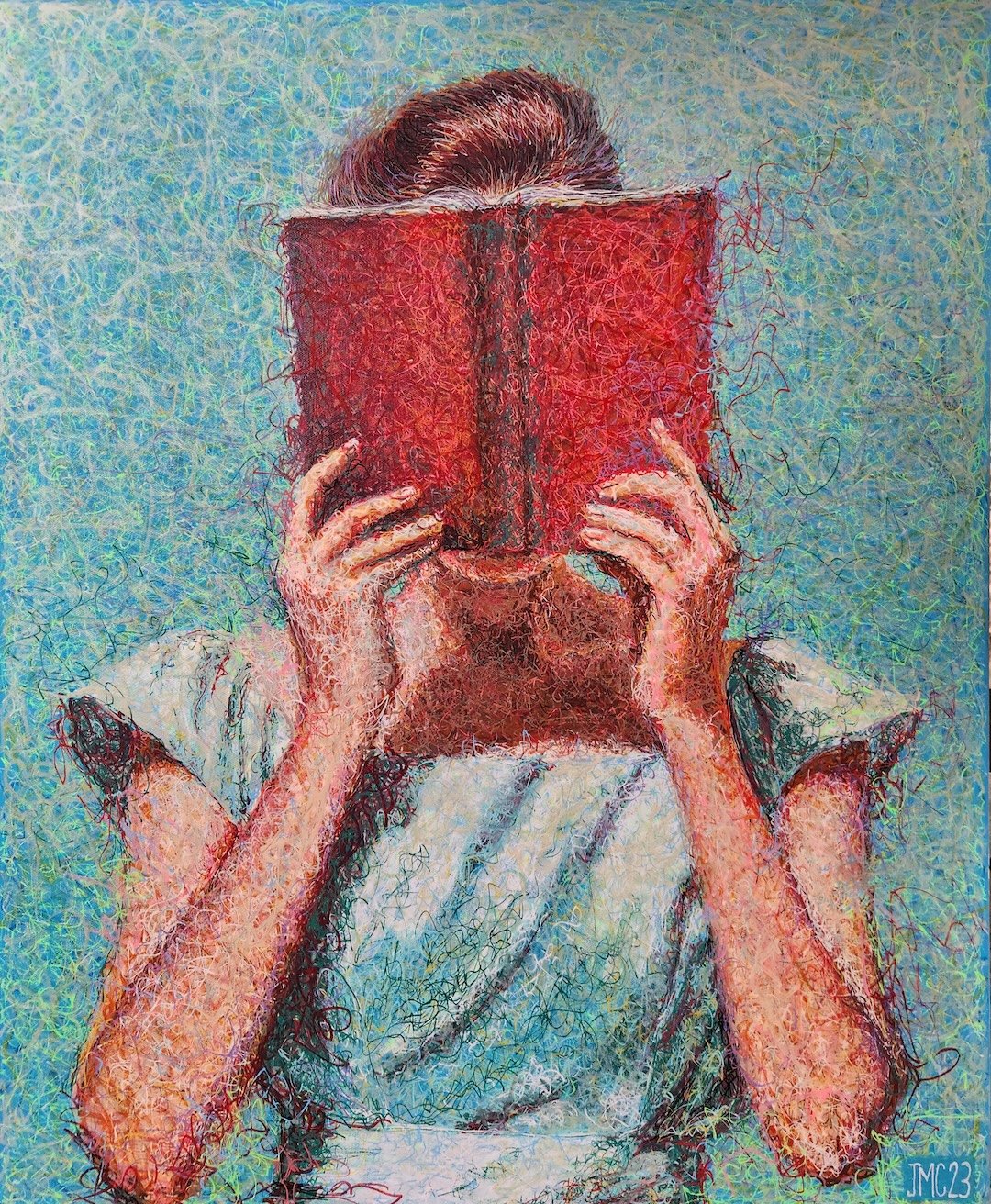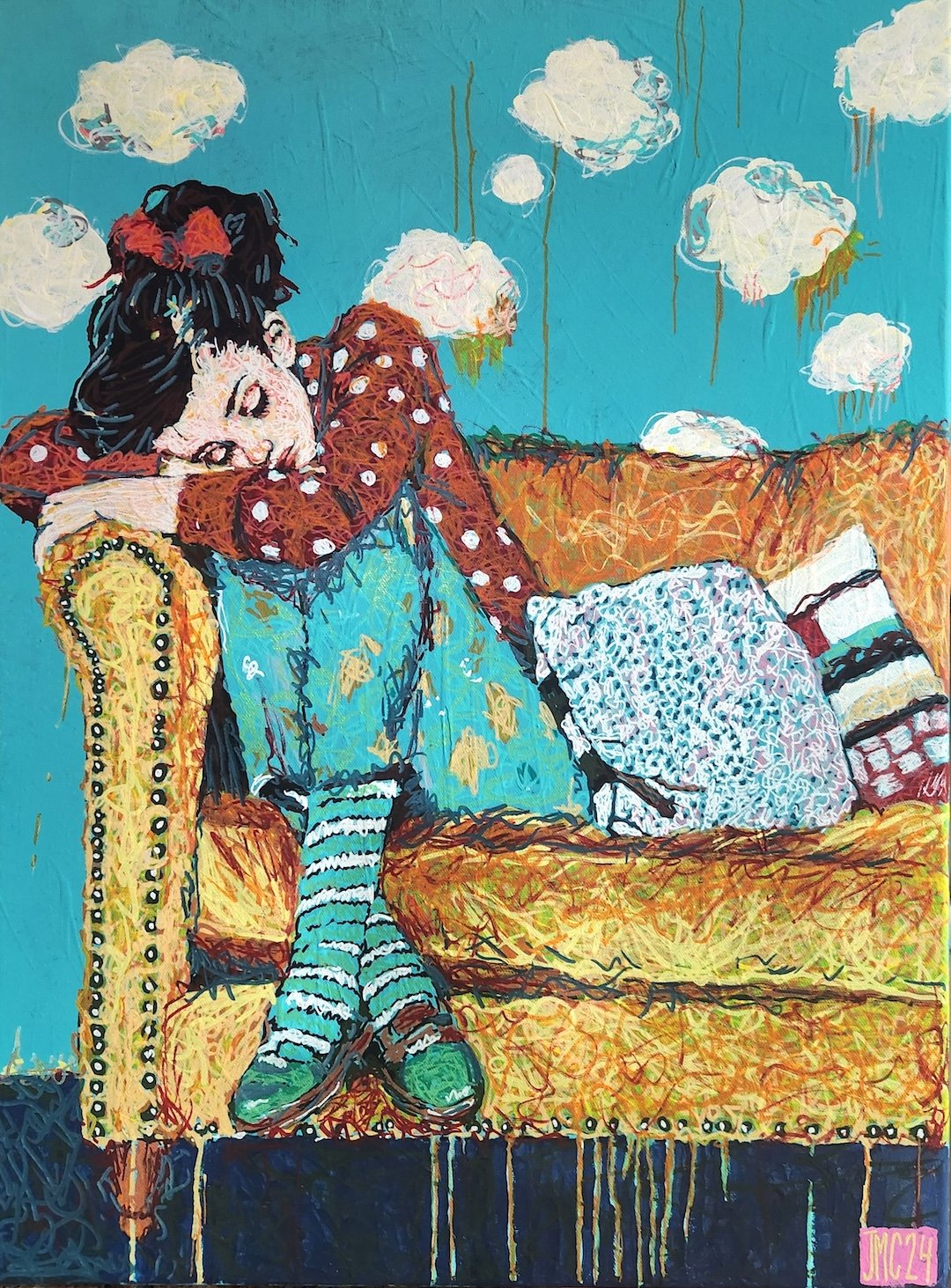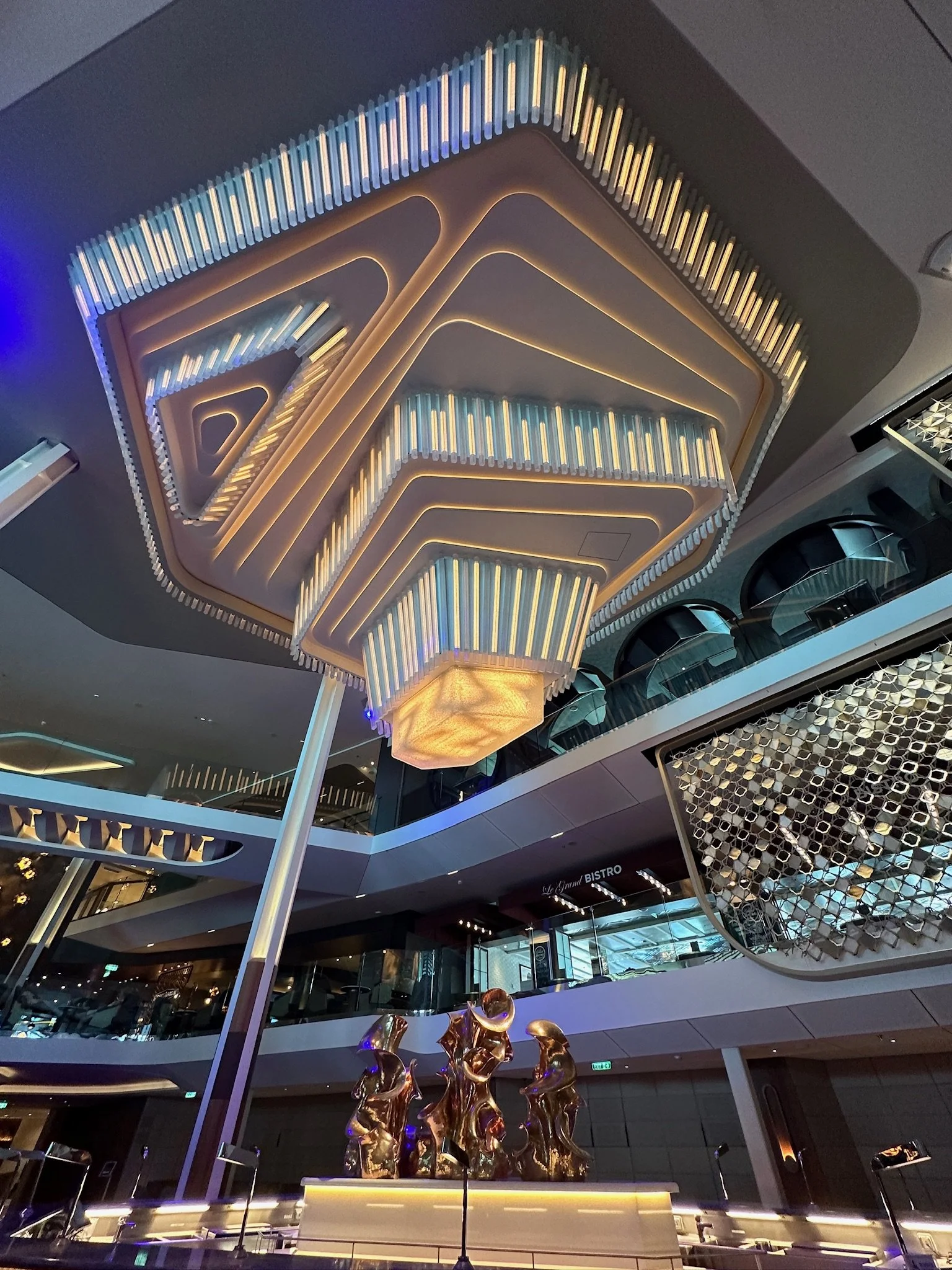Interview with artist Jeremy Colburn
Jeremy Colburn is an Arkansas artist who draws inspiration from pop culture, cinema, photography, and his lived experiences. His paintings are energized by his use of color and line and this makes them all the more unique, interesting and fun. More of Jeremy’s work can be found at Etsy, his Instagram, and website jeremycolburn.com.
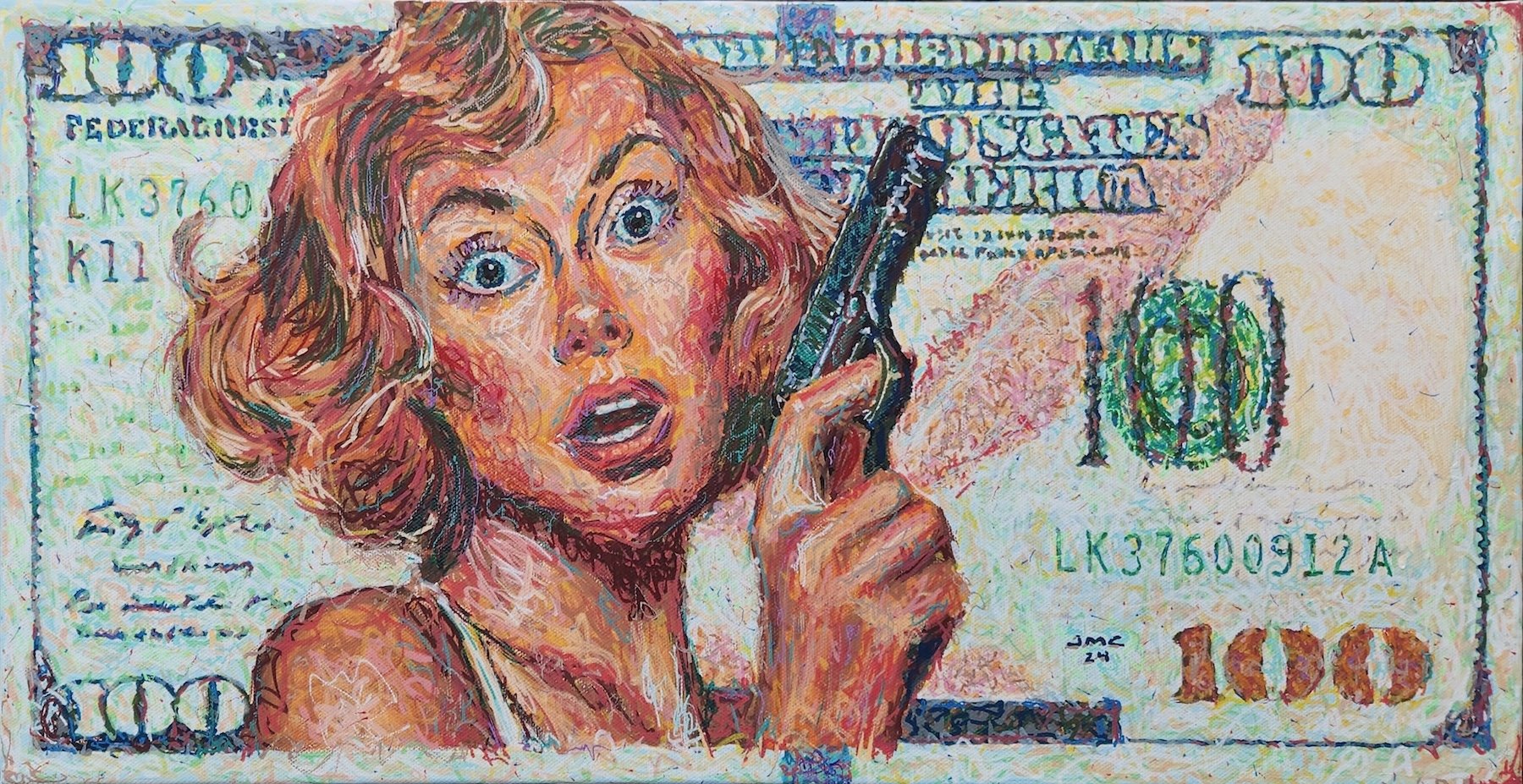
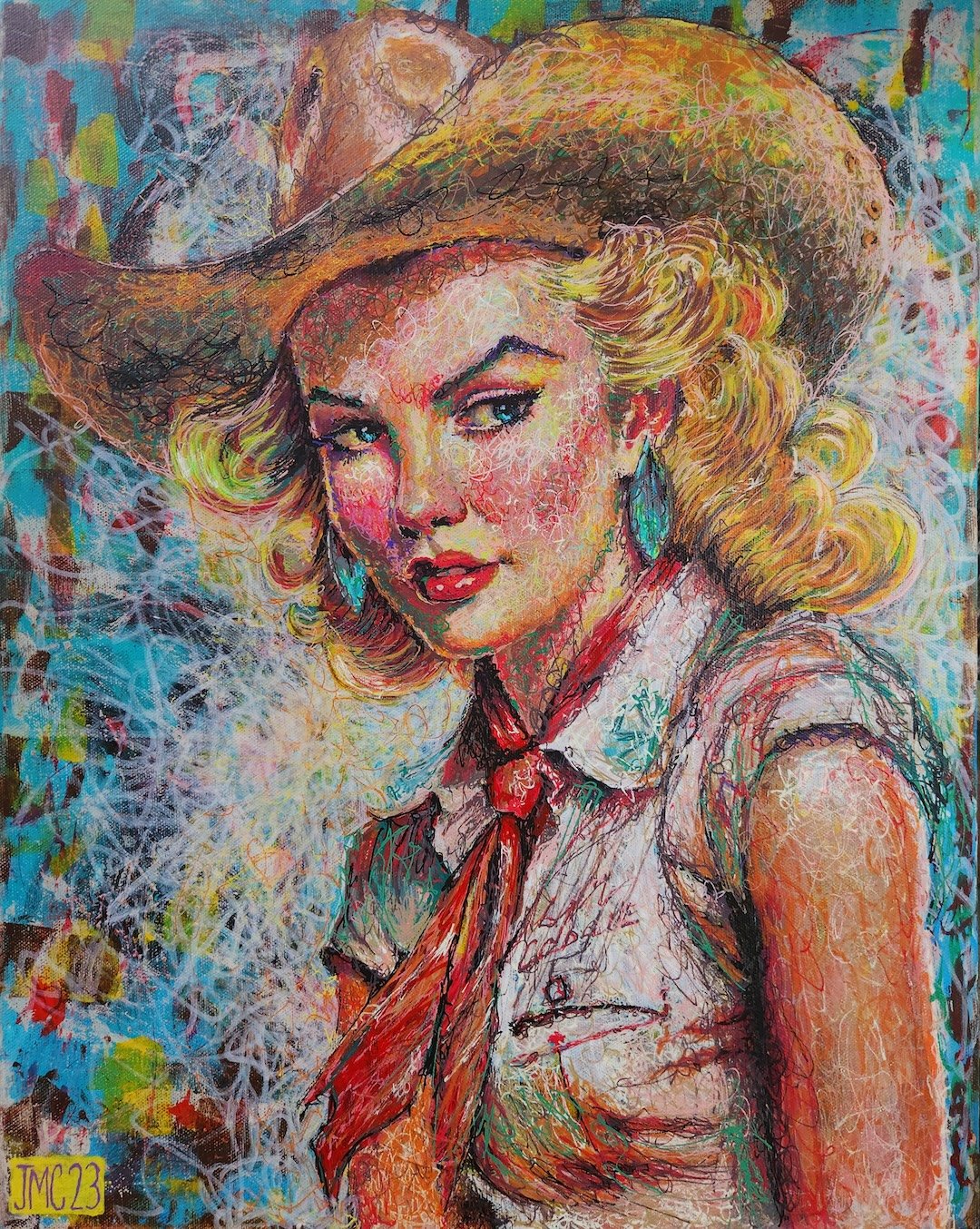
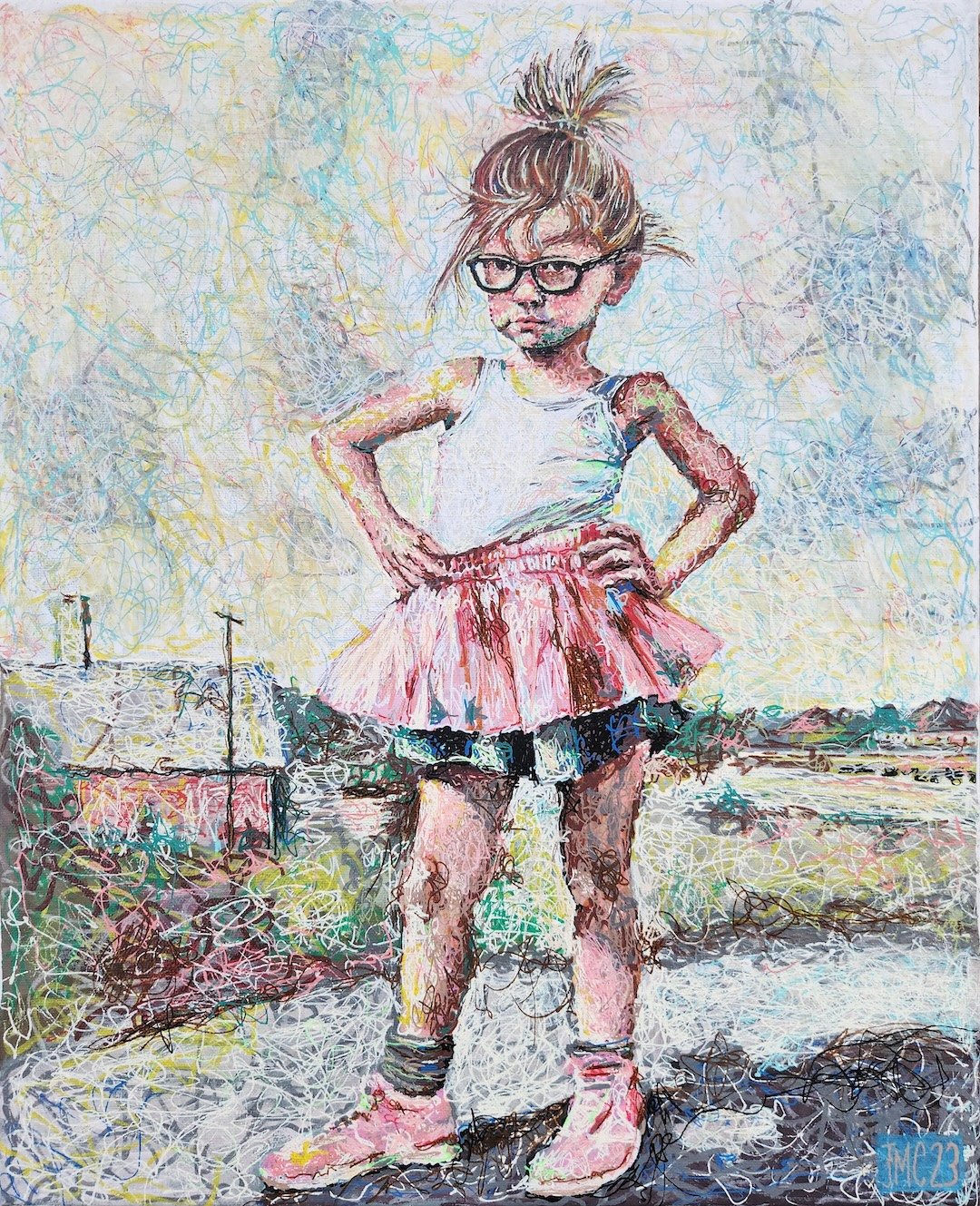
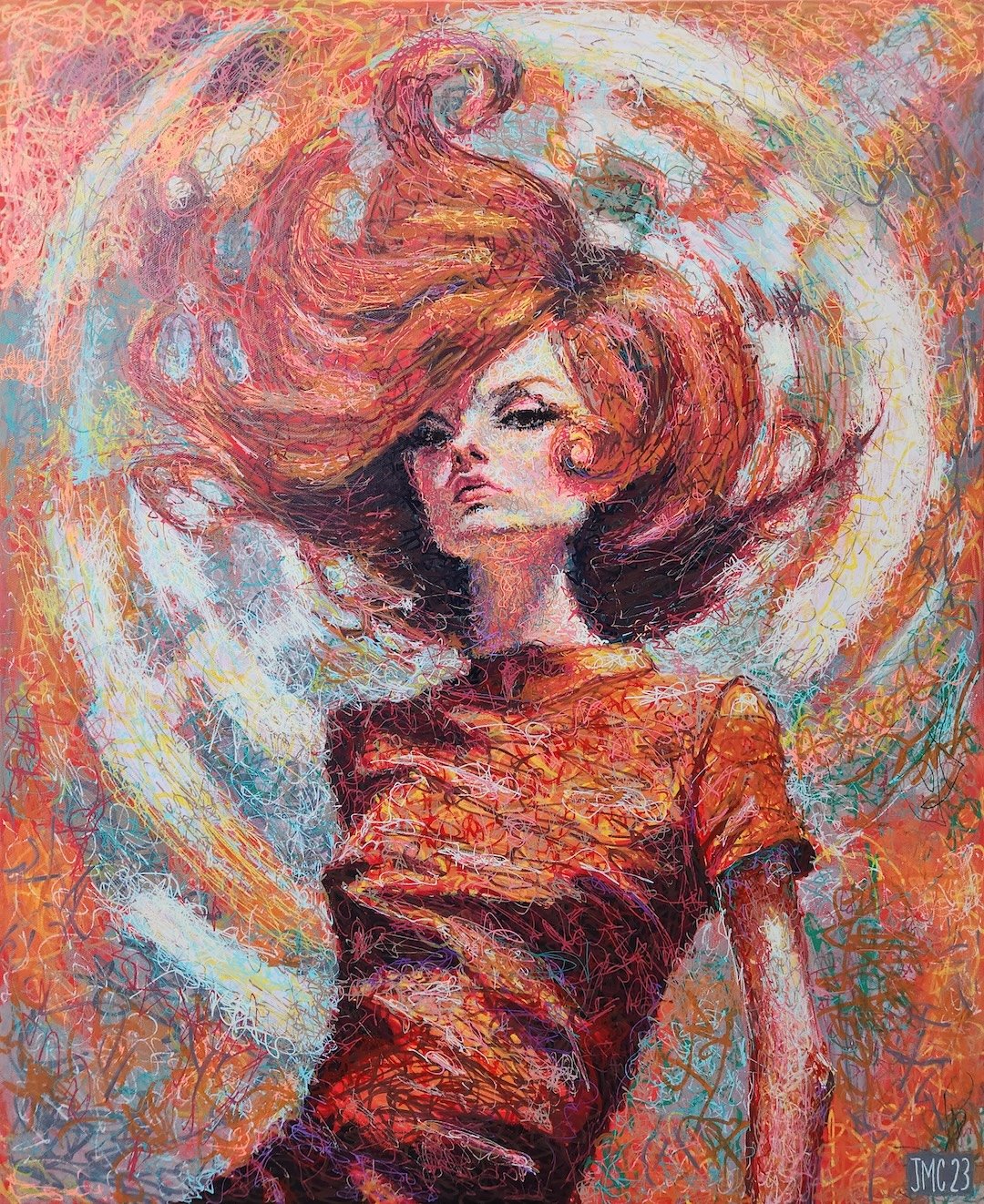
AAS: Jeremy, I believe you are originally from Little Rock. Tell me more about your background.
JC: Both my parents are from North Little Rock, and I was born in Little Rock. I have been drawing since the age of three. My mom and I used to lay on the hardwood floor of our living room and draw with crayons for hours - houses and people and animals. I took some classes at the Arkansas Arts Center as a kid, I went to high school at Parkview, then to UALR where I majored in art but never finished. It was presumed by everyone that I would pursue a profession in the visual arts, but I pushed back on that. I didn't like to sit still.
I played in a garage rock band with my dad from 1993 - 2013. We were called the Bloodless Cooties. It was a fun experience. I enjoy any kind of expressive medium. I use visual art, music, and writing to communicate with the world. In high school I made zines and stickers, spending late nights cutting and pasting at the 24-hour Kinko's in downtown Little Rock. That was a magical scene that can't exist now. But I try not to be melancholy about it. There are new artistic grounds to conquer.
I had a radio show on KABF in the late 90’s called the Red Velvet Lounge. I would make tiny flyers for the show and leave stacks of them everywhere I went. I stuck them inside of books at Barnes and Nobles. I'd go to Dillard's and put them in the pockets of the clothes on the racks. I loved making graphics and promoting any project I was associated with. I've done freelance graphic design off and on for 25 years. Most notably I designed the pages and website of the bi-monthly Localist Magazine which existed from 2005 - 2007. Nowadays, I donate my recreational graphic design skills to not-for-profit causes in the form of flyers and newsletters.
I currently paint with acrylics, although I've dabbled in other mediums and other entire disciplines. I spent a year trying to be a sculptor. I taught high school studio art and art history for one semester in 2012 and determined that academia isn't where I belong. I envy those who can articulate their methods and coach others. I've had some amazing teachers over the years. Even today, some of their words sit on my shoulder and whisper in my ear while I work. But I don't know how they do it. Teaching is like witchcraft to me.
After getting sober in 2019, a clear head gave me the patience and discipline to begin a serious attempt at art as a career. I never liked being uncertain of the source of my creativity. I used to hear Spaulding Gray talk about how he was passionate because of the vodka and that scared the daylights out of me. Doing a painting, not remembering how or why I created it is an uncomfortable dilemma to reconcile. The older I get, the more I rely on my memories, and I want that stuff to remain intact for as long as possible.
I got married last year and my wife, Alana, is my biggest promoter. She pushes me to create, and she holds my hand when I can't see the light at the end of the tunnel. She's not an artist, and for that reason I value her insight more than most. I like to know what my work looks like to someone who comes from a completely different background.
AAS: Were you surrounded by talented and artistic people growing up?
JC: I think everyone is talented and everyone is an artist. We're all just toiling in different fields. A mathematician definitely sees art in an equation. When you see a barista making a matcha latte, they have to have a sense that they're creating something beautiful, or else they wouldn't be able to function. They may not describe it that way, but it's my job, as an artist, to see the soul of things.
I've always been in the vicinity of creative people. I worked in restaurants for a couple decades and there's a plethora of artists, writers, and musicians making ends meet in those places. For a long time, I had a problem of being jealous of everyone else's talents instead of living in gratitude. Plutarch said “The mind is not a vessel to be filled, but a fire to be kindled.” I've been trying to remember that. Being surrounded by talent is good kindling for my creative flame.
My dad, Jerry Colburn, is a self-taught artist and he's been lurking around the Arkansas art scene since the 80's. When I was a kid, he showed me some of the exercises from the book, Drawing on the Right Side of the Brain. We used to dumpster dive at Pinkey's Photo for discarded pictures that he would use in collages. He does a lot of amazing things, but we have different styles and vary in our approach. He can crank out 10 pieces in a day because he loves the process of finding his path as he goes. There's gold buried in his mountains of cardstock and ink and madness. Check out his Instagram.
I believe there's art all around us if we look for it. I can get inspired by watching Top Chef and hearing the judges describe the complexity of a velouté. That's a more likely scenario to get my juices flowing than a conversation with another artist about art. But there's merit to anything that inspires. I tend to enjoy the hunt for inspiration in unlikely places.
“I believe there's art all around us if we look for it.”
AAS: The first painting of yours that I saw was Bigger and Better Places and it blew me away and I knew I had to find out more about you and your art. There must be a back story behind that image.
Bigger and Better Places, 30” x 24”, acrylic on canvas
JC: It's the third in the series: Mono No Aware (a Japanese aesthetic that depicts a fleeting, varying beauty). It is a visual chronicle of desolation and restlessness in a dystopian American Southwest. Settings for this series stretch from the neon cacophony of Las Vegas to blood-stained Abilene. It's a story that hasn't found its sea legs yet. I hope to continue creating new “chapters” like a never-ending soap opera.
The fellow we meet in Bigger and Better Places has been thrown out of his own home with all his possessions and couldn't be happier. He waits for the bus to Marfa, where his 106-year-old Comanche grandmother runs a commune and has promised him a job as an undertaker.
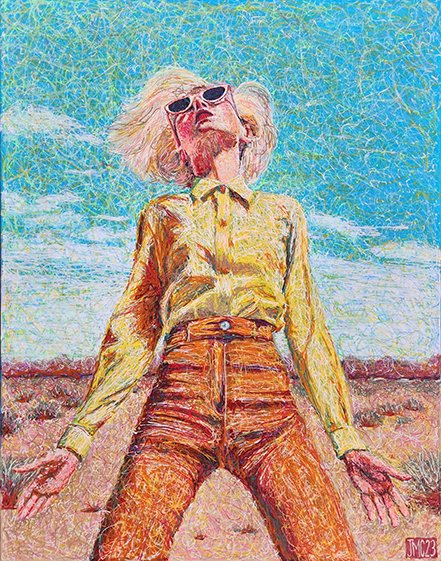
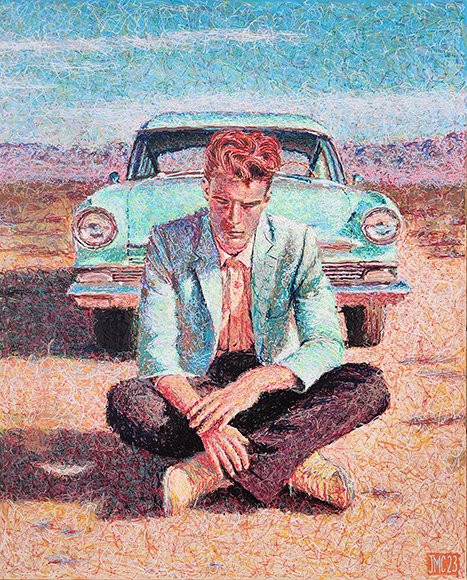
AAS: Wow, can’t wait to see the rest of the series! Tell me about your style, at least the style you used for Bigger and Better Places.
JC: I work in acrylics. Most of the paintings I've been doing lately are started with brushes and finished with acrylic paint pens. Once I've sketched the outline onto the canvas, I start painting with brushes. This may be followed by a 2nd or 3rd layer with brushes to develop some depth. I allow myself total freedom to err and muck around, knowing that I'm only creating scaffolding for the eventual layers of pen work, which will cover roughly 90% of the canvas.
The fun begins when I've completed this rudimentary version of what I want, and I begin to scribble over it with the pens. The entire process can take a few days or a few weeks. I've been refining this approach for the past year. Under every snarl of wild lines is a crude underpainting that you'll never see. And my rule of thumb is - no straight lines and no solid colors. I use the pens to destroy any semblance of a “well-behaved” work of art. I like to move around a lot when I'm painting with the pens. During this phase, I'll usually have the canvas laying flat on the island in the middle of our kitchen so I can walk around it and work upside down or sideways if necessary.
AAS: Grace has a very different look but your technique here results in a painting filled with emotion. Is there a story behind that image?
Grace, 36” x 24”, acrylic on canvas
JC: There's no story behind her identity. But the painting itself is kind of an origin story of my present style. It began as a basic study of value. I started with a black canvas and gradually began adding light. I was doing it all with brushes, and my brushwork has always been spectacularly sloppy. Now, sloppiness can be used as a tool if you're at a certain level of proficiency. It can be employed to reverse contrivance. The problem is - I've never wanted to be good with brushes. I've always seen them as a hindrance. They're just tiny little mops smearing paint around haphazardly. At least that's how they feel to me. Maybe I'm becoming an old dog who refuses to learn new tricks.
I'd recently purchased some acrylic paint pens (ostensibly to add some delicate punctuation to my work) and this would be my first time working them into the mix. I came to a stopping point, and I started to scribble over all my completed brushstrokes. At first it was an act of defiance. I was done with the painting. I didn't like it and I was using the pens as a Marxist punk kid would tag graffiti over bourgeois signage, feigning offense. But I observed a new painting emerging. I kept scrawling until I'd covered every solid color and every straight line. It was the birth of my current playbook.
AAS: Who are some of the artists that inspire you and why?
JC: Edward Hopper and Toulouse-Lautrec have been at the top of my list for a long time. I get devious inspiration from Gil Elvgren and Arthur Sarnoff. Vladimir Tretchikoff is a hero. Norman Rockwell is a bulwark.
There are a lot of contemporary painters that are doing great things right now - Edward Povey, Jenny Saville, Hope Gangloff - all of whom have a special place in my heart. I don't like citing painters as specific influences because if I see something and it's being done well, I don't want to copy it.
These days, the stuff that excites me is mostly photography and cinematography. Kourtney Roy, Miles Aldridge, and Brooke DiDonato have inspired my work more than any painter. I might see a movie or an album cover that sets a mood that I desperately want to achieve on a canvas. I've combed through Gaspar Noé film stills looking for subject matter. My painting style is a vehicle for storytelling and I'm always on the lookout for new stories to tell. Fortunately, I know who I am and I'm happy with the path I'm carving out.
AAS: Another of my favorites is Discomposed. The image has a retro 60’s 70’s vibe. But I think it is your use of color that makes it so exciting.
Discomposed, 24” x 18”, acrylic on canvas
JC: She was born from those old sewing patterns - McCall's, Butterick, Simplicity, etc… I have a deep appreciation for fashion and wanted to conjure a sassy creature from 1960's England with Vivienne Westwood's arrogance. She reminds me of Patsy from AbFab. It's wine o'clock and she's got no time for your nonsense.
AAS: How do you think being a musician influences or informs your visual art expression?
JC: I did a lot of things backwards. My band, The Bloodless Cooties, got our first gig before we actually had any songs. Throughout my teens and 20’s I would play in countless other bands. I enjoyed them all, but I put far more work into making flyers for the shows than actually practicing the songs. I love music and I listen while I paint. My favorite band is Waxahatchee. I like short songs with simple melodies. One similarity between the way I think about music and the way I paint, is that it's fast and loose. When I'm putting paint onto the canvas, it happens in a quick and deliberate manner.
I could say painting a picture is like writing a song, but it really isn't. I paint because I can add layer upon layer resulting in something that eventually contains substance and depth. And no one sees the work. You don't need to see how the sausage is made. This is how I feel now but that kind of process didn't appeal to me when I was younger. I had angst and I needed validation. I wanted the audience to feel all my frustrations.
AAS: What I really like about your work is that you also paint in different styles. Juneberry is remarkable! It must have been a challenge and fun to paint.
Juneberry, 24” x 18”, acrylic on canvas
JC: Juneberry was an ordeal. I was searching for a path, a style, a methodology. It's all over the place. I spent over 80 hours on it. That was spread out over about six weeks. It is an important piece because, in it, I explored a number of possible directions and approaches. The result is a tumultuous documentary of indecision. It hangs in my hallway at home as a reminder.
AAS: Then there is Yutes. It is just extraordinary and mesmerizing, especially the childrens’ coats. Tell me about it.
Yutes, 18” x 24”, acrylic on canvas
JC: Everything I paint is a diary entry. Yutes happened after I bought some stencils. I had also been doing a lot of doodles and I wanted to incorporate them into a painting. It was another turning point in my timeline. It hung in the window of Argenta Nutrition (my friend Cassie's place) for a few months. A lot of people commented on it. I wish I could see it without remembering the difficulty I experienced in trying to keep it coherent. I have to let myself laugh at it and accept the joy of the chaos.
AAS: Jeremy, where do you think your visual arts will take you in the next few years?
JC: I'm currently working on a solo exhibition slated for June 2024 at Acansa Gallery in Argenta. It's the first time I've let such a bright light shine directly on my vulnerabilities. Fortunately, I enjoy the pressure that comes with deadlines. Without a goal, my work would lack focus. I hope to have about 20 paintings to show. The theme will be a contrast of light and dark, good and evil, joy and pain. I have some other ideas in the hopper that may or may not come to fruition.
I've been enjoying the marketing side of the art business. Promoting myself on social media is a daunting task, but it's a necessary evil. I recently made an Etsy page to handle all my sales. I've got prints available of most of my paintings and I'm looking for new venues to display my work. Thank you for the opportunity to be included in the blog!
